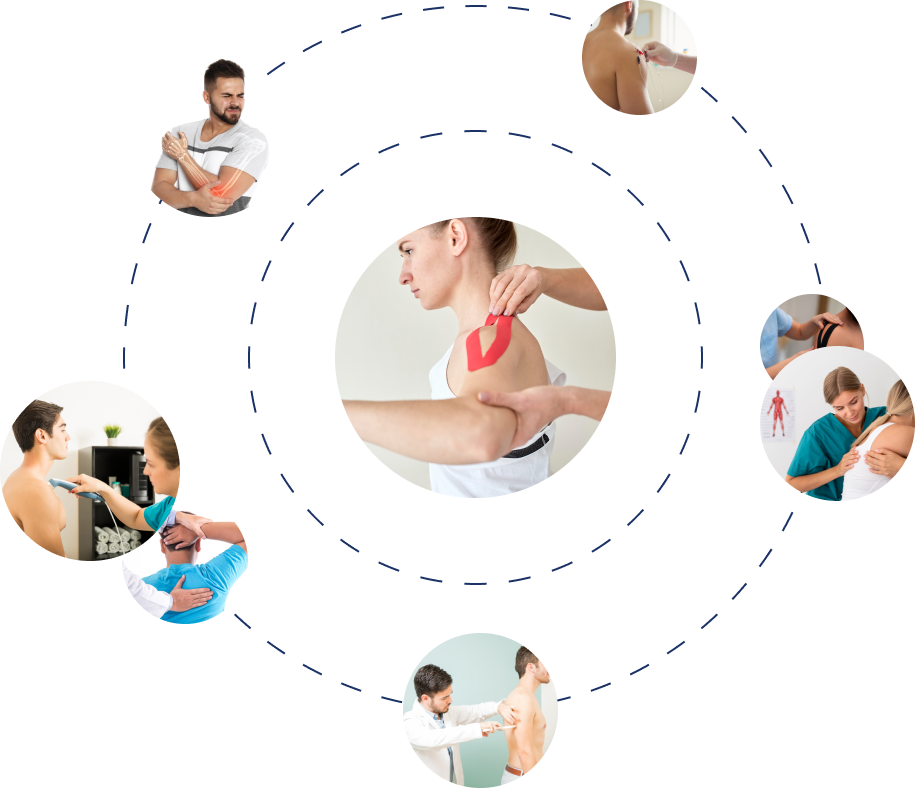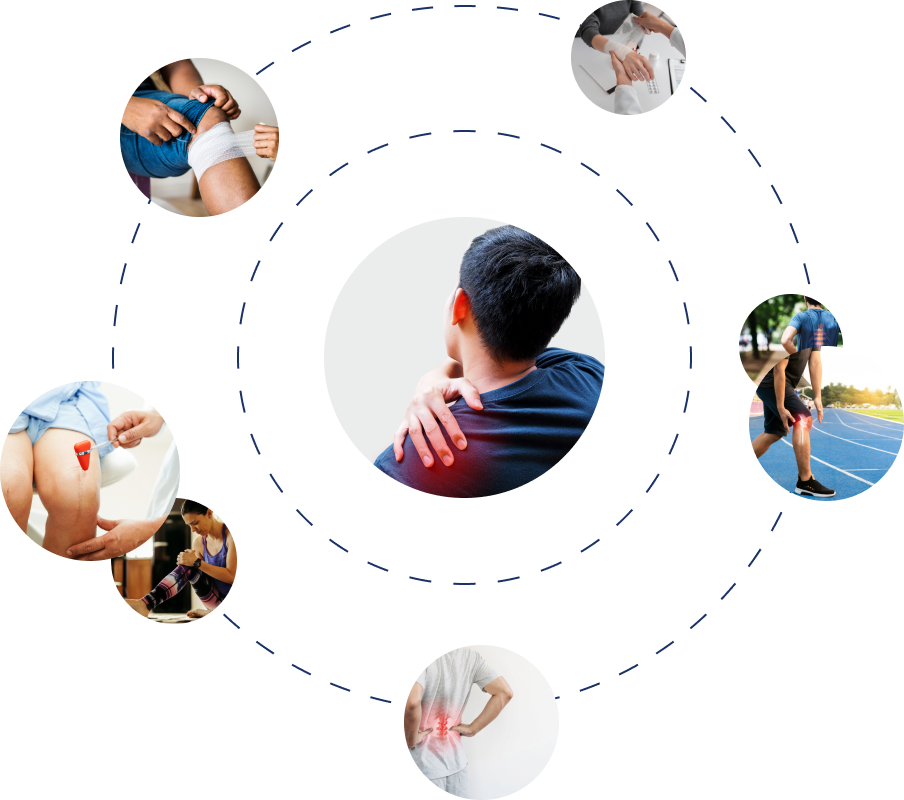Our Publications
Lorem ipsum dolor sit amet, consectetur adipiscing elit. Ut elit tellus, luctus nec ullamcorper mattis, pulvinar dapibus leo. Lorem ipsum dolor sit amet, consectetur adipiscing elit. Ut elit tellus, luctus nec ullamcorper mattis, pulvinar dapibus leo.
Arthroscopic Posterior Bone Block gmentation in Posterior Shoulder Instability
Background: Posterior instability is a relatively rare and challenging condition to treat. Soft-tissue procedures do not always provide satisfactory results. We present the results after arthroscopic posterior bone block augmentation with an iliac crest bone graft and a minimum of 12 months’ follow-up. Materials and methods: Between 2008 and 200…
The arthroscopic Latarjet: a multisurgeon learning curve analysis
Background: The open Latarjet procedure is a standard surgical treatment option for anterior shoulder instability in patients with a high risk of failure following soft tissue stabilization. The arthroscopic technique has potential advantages of minimal invasiveness, reduced postoperative stiffness, and faster rehabilitation but is regarded as tec…
Factors that predict postoperative motion in patients treated with reverse shoulder arthroplasty
Reverse shoulder arthroplasty (RSA) has proven to be a useful yet inconsistent tool to manage a variety of pathologic conditions. Factors believed to lead to poor postoperative range of motion (ROM) may be associated with preoperative diagnosis, poor preoperative ROM, and surgical factors such as inability to lengthen the arm. The purpose of this s…
The Arthroscopic Trillat Procedure Is a Valuable Treatment Option for Recurrent Anterior Instability in Young Athletes With Shoulder Hyperlaxity
Purpose The purpose of this study is to report the outcomes of the all-arthroscopic Trillat procedure, combined with capsular plication, for the treatment of recurrent anterior instability in young athletes with shoulder hyperlaxity (ER> 90°). Methods We performed a retrospective evaluation of patients with recurrent anterior instability and shoul…
The Arthroscopic Trillat Procedure Is a Valuable and Durable Treatment Option for Recurrent Anterior Instability Associated With Massive Irreparable Cuff Tears
Purpose The purpose of the present study is to report the mid- and long-term clinical and radiological outcomes of the arthroscopic Trillat for the treatment of recurrent anterior instability in patients with chronic massive irreparable rotator cuff tears (MIRCT) and maintained active shoulder motion. where RSA is not indicated. Methods Twenty-one…
The Arthroscopic Trillat Procedure: A Reliable Treatment Option For Patients With Recurrent Anterior Instability And Massive Irreparable Cuff Tears
The Doubled-Suture Nice Knot
The authors describe a novel suture fixation technique that combines a doubled suture with a sliding knot. The knot can be tied in both open and arthroscopic surgery to fix torn tendons/ligaments and fractured/osteotomized bones. The advantages of the doubled-suture Nice knot include strength, adjustability, simplicity, and versatility. This techni…
All-Arthroscopic Revision Eden-Hybinette Procedure for Failed Instability Surgery: Technique and Preliminary Results
Purpose: To describe the technique of an all-arthroscopic Eden-Hybinette procedure in the revision setting for treatment of a failed instability procedure, particularly after failed Latarjet, as well as to present preliminary results of this technique. Methods: Between 2007 and 2011, 18 shoulders with persistent instability after failed instabil…
Lower limb compartment syndrome as a complication of radical hysterectomy
Highlights • Compartment syndrome is a rare complication of prolonged lithotomy position. •We report a case of compartment syndrome complicating radical hysterectomy. •Prompt diagnosis is crucial to reduce morbidity from compartment syndrome. •Awareness of this complication allows surgeons to address modifiable risk factors.
Technique de Trillat arthroscopique pour instabilité antérieure de l’épaule associée à une rupture irréparable de la coiffe des rotateurs
Results of closed management of acute dislocation after reverse shoulder arthroplasty
Postoperative instability continues to be one of the most common complications limiting outcomes of reverse shoulder arthroplasty (RSA). The optimal management of this complication remains unknown. The purpose of this study was to evaluate the outcomes of patients with postoperative dislocation after RSA managed with closed reduction. All patients…
Arthroscopic Latarjet Procedure
The arthroscopic Latarjet procedure (ALP) is the natural evolution of a long-term validated open technique. Thus combining the advantage of any minimally invasive technique with the possibility to treat other concurrent pathologies, the ALP has been developed and ameliorated during the last 10 years.
Kinematic Impact of Size on the Existing Glenohumeral Joint in Patients Undergoing Reverse Shoulder Arthroplasty
Background Glenohumeral relationships in reverse shoulder arthroplasty patients have not been previously reported. The purpose of this study was to quantify and compare the shoulder spatial relationships and moment arms. Measurements were used to define general size categories and determine if sizes scale linearly for all metrics. Methods Ninety-t…
Arthroscopic Posterior Bone Block Procedure: A New Technique Using Suture Anchor Fixation
We present a novel all-arthroscopic technique of posterior shoulder stabilization that uses suture anchors for both bone block fixation and capsulolabral repair. The bone graft, introduced inside the glenohumeral joint through a cannula, is fixed with 2 suture anchors. The associated posteroinferior capsulolabral repair places the bone block in an…
Arthroscopic Coracoid Transfer
The best operative procedure to address anterior recurrent instability in both the index and revision setting remains a subject of orthopaedic surgical debate. Though many published reports propose treatment algorithms to aid the surgeon in operative technique selection; ultimately, institutional precedent and surgeon experience often dictate the p…
Can surgeons predict what makes a good hemiarthroplasty for fracture?
The purposes of this study were (1) to identify the risk factors for tuberosity complications and poor functional outcomes and (2) to compare a standard humeral stem with a fracture-specific humeral stem in hemiarthroplasty for the treatment of 3- and 4-part proximal humeral fractures. We retrospectively reviewed the cases of 60 consecutively opera…
The anterior deltoid's importance in reverse shoulder arthroplasty: A cadaveric biomechanical study
Background: Frequently, patients who are candidates for reverse shoulder arthroplasty have had prior surgery that may compromise the anterior deltoid muscle. There have been conflicting reports on the necessity of the anterior deltoid thus it is unclear whether a dysfunctional anterior deltoid muscle is a contraindication to reverse shoulder arthr…
Arthroscopic posterior bone block: Surgical technique
Posterior glenohumeral instability remains a difficult problem. There are still many controversies regarding surgical treatment, due to a lack of understanding the pathomechanical issues leading to posterior instability. This article presents a new arthroscopic technique of posterior bone block augmentation, which we found to be effective, repeatab…
Male-Female Differences in Scoliosis Research Society-30 Scores in Adolescent Idiopathic Scoliosis
Longitudinal cohort study. To compare functional outcomes between male and female patients before and after surgery for adolescent idiopathic scoliosis (AIS). There is no clear consensus in the existing literature with respect to sex differences in functional outcomes in the surgical treatment of AIS. A prospective, consecutive, multicenter databas…
Endogenous production of reactive oxygen species is required for stimulation of human articular chondrocyte matrix metalloproteinase production by fibronectin fragments
The objective of the present study was to determine if reactive oxygen species (ROS) are required as secondary messengers for fibronectin fragment-stimulated matrix metalloproteinase (MMP) production in human articular chondrocytes. Cultured cells were stimulated with 25 microg/ml of the alpha5beta1 integrin-binding 110-kDa fibronectin fragment (FN…







